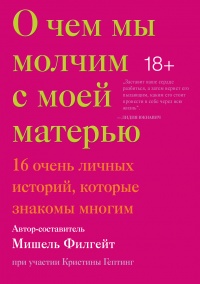64. Dubner, Stephen J. 2011. “Hey baby, is that Prius you’re driving?” http://www.freakonomics.com/2011/07/07/hey-baby-is-that-a-prius- you%E2%80%99re-driving/.
65. Dunbar, Robin, & Barrett, Louise 2009. Oxford Handbook of Evolutionary Psychology. Oxford University Press.
66. Durante, K. M., V. Griskevicius, S.M. Cantu, S. M., J.A. Simpson, and J.M. Tybur. 2012. “Sex ratio and women’s careers: Does a scarcity of men lead women to choose briefcase over baby?”. Journal of Personality and Social Psychology. 103: 121–134.
67. Durante, K. M., V. Griskevicius, S.E. Hill, C. Perilloux, and N.P. Li. 2011. “Ovulation, female competition, and product choice: Hormonal influences on consumer behavior”. Journal of Consumer Research. 37: 921-934.
68. Durante, K. M., V. Griskevicius, J.A. Simpson, S.M. Cantu and N.P. Li. 2012. “Ovulation leads women to see sexy cads as good dads”. Journal of Personality and Social Psychology. 103: 292–305.
69. Ellis, B. J. 2004. “Timing of pubertal maturation in girls”. Psychological Bulletin. 130: 920–958.
70. Ellis, B. J., A. J. Figueredo, B.H. Brumbach, and G.L. Schlomer. 2009. “Fundamental dimensions of environmental risk: The impact of harsh vs. unpredictable environments on the evolution and development of life history strategies”. Human Nature. 20: 204–268.
71. Emlen, S. T., P.H. Wrege, and N.J. Demong. 1995. “Making decisions in the family: An evolutionary perspective”. American Scientist. 83: 148–157.
72. Federal Bureau of Investigation. 2011 “Crime in the United States. 2011. FBI.gov, http://www.fbi.gov/adout-us/cjis/ucr/crime-in-the-us/2011/crime-in-the-us-2011.
73. Feuer, A. 2008. “Thousands later, he sees lottery’s cruelty up close”. The New York Times. Retrieved from http://www.nytimes.com/2008/08/22/ nyregion/22super.html?_r_1.
74. Figueredo, A. J., G. Vásquez, B. H. Brumbach, J. A. Sefcek, B. R. Kirsner and W. J. Jacobs. 2005. “The K-Factor: Individual differences in life history strategy”. Personality and Individual Differences, 39(8), 1349–1360.
75. Fiske, A. P. 1992. “The Four Elementary Forms of Sociality: Framework for a Unified Theory of Social Relations”. Psychological Review. 99: 689–723.
76. Foa, E. B., and U. G. Foa. 1980. Resource theory: Interpersonal behavior as exchange. In K. J. Gergen, M. S. Greenberg, & R. H. Willis (Eds.), Social exchange: Advances in theory and research — New York: Plenum Press, 77–94.
77. Francis, A. M. 2011. “Sex ratios and the red dragon: using the Chinese Communist Revolution to explore the effect of the sex ratio on women and children in Taiwan”. Journal of Population Economics. 24: 813–837.
78. Frank, Robert. 1999. Luxury Fever. Princeton University Press.
79. Freiberg, K. L., and J.A. Freiberg. 1996. “Nuts! Southwest Airlines crazy recipe for business and personal success”. New York: Broadway Books.
80. Friedman, D. 1996. Hidden Order: The economics of everyday life. New York: Harper Collins.
81. Gabor, A. 2000. The capitalist philosophers. New York: Times Business.
82. Gandolfi, Arthur, Anna S. Gandolfi, and David P. Barash. 2002. Economics as an Evolutionary Science: from utility to fitness. Transaction Publishers.
83. Gangestad, S. W. and J. A. Simpson, 2000. The evolution of human mating: trade-offs and strategic pruralism”. Behavioral and brain sciences. 23:573–644.
84. Gangestad, S. W. and J.A. Simpson. 2007. The Evolution of Mind: Fundamental Questions and Controversies. New York: Guilford Press.
85. Gazzola, Valeria, Michael L. Spezio, Joset A. Etzel, Fulvia Castelli, Ralph Adolphs, and Christian Keysers. 2012. “Primary somatosensory cortex discriminates affective significance in social touch”. Proceedings of the National Academy of Sciences. 109: 9688–9689.
86. Gazzaniga, M. 1985. The social brain: Discovering the networks of the mind. New York: Basic Books.
87. Geary, D. C. 2000. “Evolution and the proximate expression of human paternal investment”. Psychological Bulletin. 126: 55–77.
88. Gettler, L.T., A.B. Feranil, T.W. McDade and C.W. Kuzawa. 2011. “Longitudinal evidence that fatherhood decreases testosterone in human males”. Proceedings of the National Academy of Sciences. 108(29):16 194–16 199.
89. Gettler L.T., T.W. McDade and C.W. Kuzawa. 2011. “Cortisol and testosterone in Filipino young adult men: Evidence for co-regulation of both hormones by fatherhood and relationship status”. American Journal of Human Biolog. 23(5): 609–620.
90. Ghazanfar, A. A., J.G. Neuhoff, N.K. Logothetis. 2002. “Auditory looming perception in rhesus monkeys”. Proceedings of the National Academy of Sciences USA. 99 (24): 15 755–15 757.
91. Gigerenzer, G., W. Gaissmaier, E. Kurz-Milcke, L. M. Schwartz and S. Wolo- shin. 2007. “Helping doctors and patients to make sense of health statistics”. Psychological Science in the Public Interest. 8: 53–96.
92. Glocker M.L., D.D. Langleben, K. Ruparel, J.W. Loughead, R.C.Gur and N. Sachser. 2009. “Baby schema in infant faces induces cuteness perception and motivation for caretaking in adults”. Ethology. 115: 257–263.
93. Godoy, Ricardo, Victoria Reyes-Garcia, Tomas Huanca, William R. Leonard, Thomas McDade, Susan Tanner, Vincent Vadez, and Graig Seyfried. 2007. “Signaling by Consumption in a Native Amazonian Society”. Evolution and Human Behavior. 28: 124–134.
94. Goodwin, D. K. 1987. The Fitzgeralds and the Kennedys: An American saga. New York: Simon & Schuster.
95. Grady, S. 1999. Kennedy curse is a product of the Kennedy hubris. Lawrence Journal-World. July 20, 6B.
96. Griskevicius, V., J. A. Ackerman, S. M. Cantu, A.W. Delton, and T. E. Robertson, J. A. Simpson, M. E. Thomson, and J. M. Tybur. 2013. “When the economy falters do people spend or save? Responses to resource scarcity depend on childhood environments”. Psychological Science. 24:197–205.
97. Griskevicius, V., J. M. Tybur, J. M. Sundie, R.B. Cialdini, G.F. Miller, and D.T. Kenrick. 2007. “Blatant benevolence and conspicuous consumption: When romantic motives elicit strategic costly signals”. Journal of Personality and Social Psychology. 93: 85–102.
98. Griskevicius, V. and D.T. Kenrick. 2013. “Fundamental motives for why we buy: How evolutionary needs influence consumer behavior”. Journal of Consumer Psychology.
























